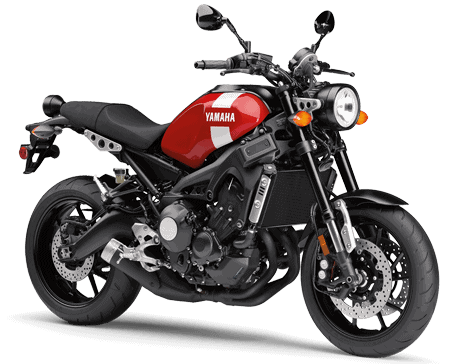When you think of a two-wheeled vehicle, the first thing that may come to mind is a motorcycle or scooter, or perhaps even a moped. All three are considered great forms of transportation for commuting or when one simply does not prefer a car. However, have you wondered what the differences are between the three two-wheeled vehicles? Aesthetically, they’re quite different, but what are the fundamental differences that set them apart? Don’t worry; we’ve got you covered. We’ll delve into the characteristics of mopeds vs. scooters vs. motorcycles to help you make an informed decision on what type of two-wheel transportation will be best for your riding situation.
Have You Been Involved In A Motorcycle Accident?
Our professional legal team screens submissions and assigns cases to some of the best motorcycle lawyers in the US.
What is a Scooter?
Commonly seen on the roads in the United States (aside from motorcycles) are scooters or motor scooters. A scooter is a two-wheeled vehicle with a step-through chassis and footrest platform. They were first developed in the early 1900s and have continued to gain popularity since their debut. The most common brand associated with a scooter is the Vespa, developed after World War II in Italy and has since been exported worldwide.

Scooters are powered by a small engine that provides all of the propulsion, with displacement ranging from 50cc to 250cc. Scooters typically operate on small 10-inch wheels and use an electrical charging system, which powers the lights and ignition system and replenishes the battery. Compared to motorcycles, scooters are more maneuverable due to their low speeds and easier to ride.
Scooters generally have engines ranging between 50cc and 250cc. However, in some western markets, you can find a scooter with an engine of up to 850cc. With an engine that large, some may think it should be classified as a motorcycle, but the key difference is that scooters have a ‘step-through’ chassis design.
Scooters have a mixture of automatic and manual transmissions, but the automatic or CVT is the leading favorite with newer models due to their ease of use. They’re fuel-efficient, lightweight, and easy to handle, and unlike mopeds, many scooters have large enough engines that are far more capable of daily commutes.
Despite their physical attributes, there aren’t any differences in their legal classification. Scooters abide by the same rules as motorcycles. One must be at least 14 years of age to ride, but some states require a minimum age of 16. People who ride scooters must have a motorcycle endorsement to ride on the streets, motorcycle insurance, and proper riding gear, including a helmet and eye protection. They obey motorcycle laws and complete similar, if not the same, tests at the Department of Motor Vehicles, so be sure to study the motorcycle instruction manual and laws if your state does not have a specific test on scooter riding and ownership.
What is a Moped?
The moped is frequently confused with the scooter, as it is not commonly used in the United States. One may think they are the same, or that one is slightly larger.
A moped is a bicycle-type vehicle (or two-wheeled vehicle) usually equipped with pedals and a low-powered engine that provides an economical mode of transportation. However, nowadays, mopeds have a step-through frame with or without pedals. It typically has an engine smaller than 50cc and/or has a maximum speed of 28mph. With such low-speed ability, they should not be ridden on highways, as they are incapable of keeping up with traffic and will put your safety at risk. Keep them to the city or urban streets where they are meant to go.

A moped’s engine is designed to assist the rider while pedaling and provide only a portion of the power. Mopeds may be equipped with a basic electrical system, but many can still be ridden with the sole use of the pedals.
Some states have included in their laws that mopeds are defined by their engine size, while others have defined them by the maximum speed the vehicle can go.
Most states classify a moped with a 50cc or less engine and a maximum speed of 28-30 miles per hour. Kansas is one of the few states that classifies a moped up to a 130cc engine size; therefore , a motor vehicle that doesn’t utilize pedaling power legally qualifies as a moped as long as it’s small or slow enough.
Similarly to legal classifications, every state has different age requirements for riding, the type of protective gear needed to be worn, and the type of license/registration and/or insurance. Most states require a motor vehicle license endorsement, so one must be at least 15 years of age, if not 16. Some states will allow a motorcycle endorsement in place of the motor vehicle endorsement, others will require both, while a limited handful doesn’t require either.
Regarding registration, about half the states require a moped to be registered to be legally ridden on the road. In a similar fashion, about half of the states require insurance as well. Personal protective gear is only required in some states, too; however, , we strongly recommend riding with the proper protection (ATGATT), whether it’s a state requirement or not, but we’ll mention it anyway, mopeds shouldn’t be ridden on highways.
What is a Motorcycle?
Motorcycles date back 100 years to the early 1900s. Many historic brands out there have a storied history of how they were developed in small barns and garages.
A motorcycle is a two-wheeled vehicle powered by a motor and contains no pedals. They are designed for higher speeds and are equipped with better acceleration and high-speed handling characteristics. Motorcycles are capable of slow urban commutes or highway speeds and beyond. They offer more wind protection than a moped or scooter and generally have some cargo storage available.
Most motorcycles have 250cc or larger engines, deeming them significantly larger than a scooter. Although you can find specific motorbikes with 250cc or smaller engines, such as off-road or Gran Prix motorcycles, the lack of the step-through chassis and the requirement to mount the motorcycle before riding characterizes it as a motorcycle vs. a scooter.

Motorcycles have an engine mounted in the middle of the frame with a gas tank above it. Unlike a scooter, the engine is attached to the frame rather than on the rear suspension. The rider sits astride the engine with the gas tank in front of them. The rider cannot step through the chassis but instead requires one to swing a leg over the chassis to mount the motorcycle. In addition, motorcycle wheels are typically larger (over 16″ in diameter) than those on a scooter.
Unlike scooters, which have a “twist and go” automatic (CVT) transmission (where one doesn’t have a clutch to control nor have to change gears), 99% of motorcycles have a manual clutch that requires the rider shift gears manually (usually conducted with the right leg). This manual clutch requires the motorcycle rider to use their right foot to actuate the rear brakes, while scooter riders can use their left hand to apply the rear brake.
Moped vs. Scooter
Finding the distinction between mopeds vs. scooters might be challenging. A few years ago, the main difference between these two was the pedals when most mopeds looked like this:
However, in modern times, mopeds are differentiated by their engine size, output, and speed; mopeds have a smaller engine with less power than scooters, with a maximum of 50cc.
Scooter vs. Motorcycle
Although variations in appearance between scooters vs. motorcycles may seem straightforward, let’s learn about some less evident ones.
Since they often have automatic transmissions, smaller engines, and superior mobility, scooters are simpler to learn to ride, leading some to even think they are safer than motorcycles. On the other hand, motorcycles are designed to travel farther distances, have bigger fuel tanks, and are typically more expensive.

moped vs. scooter vs. motorcycle
| Characteristics | Scooter | Moped | Motorcycle |
|---|---|---|---|
| Definition | Two-wheeled vehicle with a step-through chassis and footrest platform | Two-wheeled vehicle equipped with bicycle-like pedals that the rider uses to propel the vehicle | Two-wheeled vehicle designed for higher speeds and are equipped with better acceleration |
| Engine Size | 50cc to 250cc | 50cc | 250cc or larger |
| Wheel Size | 10” – 16” | Varies | 16” or larger |
| Speed | Varies by engine size | 28mph | Varies by engine size |
| Ability to Ride on Highways? | Yes | No | Yes |
| Legal Age to Ride | 14-16 | 15-16 | 16 |
| Motorcycle License Required? | Yes | Varies by state | Yes |
Key Takeaways
- Scooters are two-wheeled vehicles with a step-through chassis and footrest platform. They operate on small 10-inch wheels and use an electrical charging system with engines ranging between 50cc to 250cc.
- Mopeds are two-wheeled vehicles, sometimes equipped with bicycle-like pedals that the rider uses to propel the vehicle to start its helper motor. They have small engines no bigger than 50cc, allowing them to go at a maximum speed of 28mph. Due to their speed limitations, they cannot be ridden on highways.
- Motorcycles are two-wheeled vehicles designed for higher speeds and are equipped with better acceleration and high-speed handling characteristics. Most motorcycles have 250cc or larger engines and 16” or larger wheels.
- Scooters are fuel-efficient, lightweight, and easy to handle, deeming them more maneuverable than motorcycles at low speeds in the streets.
- 99% of motorcycles have a manual clutch that requires the rider shift gears manually, unlike scooters, which have a “twist and go” automatic (CVT) transmission.
Have You Been Involved In A Motorcycle Accident?
Our professional legal team screens submissions and assigns cases to some of the best motorcycle lawyers in the US.







